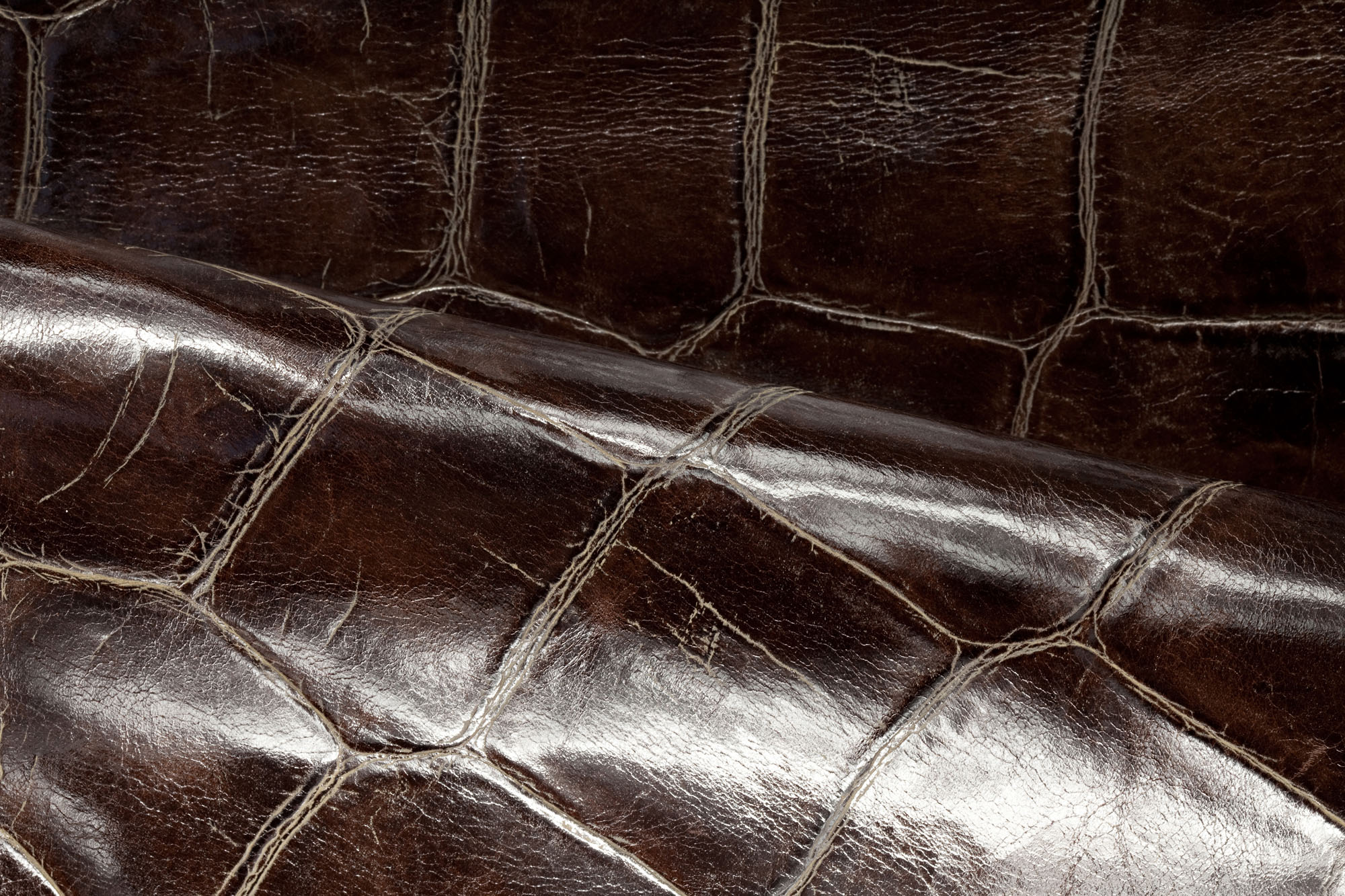Categories
[mc4wp_form id="493"]

Can You Use Caiman Skin on Your Next Pair of Sneakers?
Sometimes referred to as Colombian crocodiles are smaller than the alligator and the Nile crocodile. They are widespread in Central and South America where farmers rear them for skins and meat.
A person new to exotic hides can easily confuse caiman leather for Nile crocodile or American alligator skin. The main standout feature that sets caiman leather apart from the rest is that it is the boniest. Its rigidity is as a result of the accumulation of high amounts of calcium.
Another distinction is that caiman hides also have concave tiles, and they tend to be drier. Nevertheless, these properties do not hinder it from featuring in the list of top exotic leathers.
For your next sneaker, this is why you should consider caiman leather.
-
Affordability
Crocodilian hides dominate the exotic leather industry. Due to its hardness, caiman skin takes the third place after the American alligator skin and the Nile crocodile skin. The hide can cost two to five times less, but with skilled craftsmanship, it produces top shelf sneakers.
Another factor which makes caiman skin products budget-friendly is that the leather is more readily available on the market than other crocodilian skins. The forces of demand and supply keep caiman skin prices relatively affordable.
Caiman leather is a win-win for footwear manufacturers and aficionados with a tight budget as well as people who are unwilling to spend a fortune for a pair of shoes.
-
Durability
Caiman leather is sturdy and smooth. Though it’s rigid, it exhibits a significant level of flexibility when treated appropriately. The striking bony plates underneath the skin are not only aesthetic, but they also contribute to the longevity of the shoes.
Just like with other types of leather, you can substantially control creasing with proper skin conditioning. Caiman skin shoes are some of the most durable you can ever find.
-
Authenticity
The caiman skin is highly structured. Its calcium wealth gives the hide some stubborn white patches making it hard to dye entirely. Therefore, the shoes preserve a natural look and it’s hard to make forgeries. For this reason, it is easy for a crocodilian skin expert to distinguish original leathers from synthetic imitations.
-
Determining the Right Size
Crocodilian leather dealers usually take caiman skin measurements at the widest part of the belly. The skins have different qualities depending on the blemishes and flexibility. The best caiman leather for sneakers is Grade I and II.
The ideal hide for making a complete pair of sneakers is typically 34 to 38 cm outside measure or 27 to 30 cm inside measure. Such sizes would allow you to work around any unwanted flaws appropriately.
-
Dealing with Caiman Skin’s Rigidity
The basics of any shoemaking are the same, but caiman skins require extra skill. Since the leather is quite bony, its stiffness makes it hard to manipulate. Another challenge is getting rid of the markings which remain in the final product due to calcium deposits.
One trick for preventing wear and tear of needles and breakages is to reduce the thickness of the tough sections along the sewing line using an appropriate tool (such as a Dremel).
If you need flexible footwear, you can use a special chemical treatment to make the skin tender. You should then provide the end user with a comprehensive guide for preserving the suppleness. Otherwise, you can use different materials for parts of the shoe where flexibility is paramount.
Caiman skin requires more effort than other types of skin. Fortunately, it strikes a balance between cost, style, and durability. It is an excellent raw material for high-end fashion shoes when cost-effectiveness is imperative in the shoemaking process.